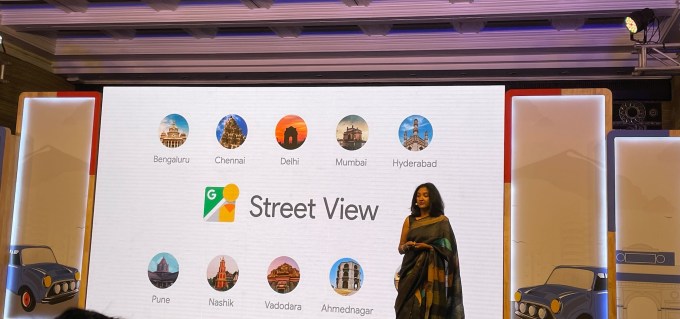Google has relaunched Street View, the Google Maps feature that allows users to explore an area through 360-degree panoramic street-level images, in India more than a decade after it first rolled out the service in the South Asian market and roughly six years after the feature was banned in the country over security concerns.
The company, which first launched Street View in the country for in 2011, said it has partnered with local giants Genesys and Tech Mahindra to relaunch the service, which is now live in 10 Indian cities. The company expects to roll out the service to 50 Indian cities by the end of the year.
This is the first time that, Google executives said at a press briefing in New Delhi Wednesday, Google has partnered with third-party firms for Street View. Unveiled 15 years ago, Street View is live in over 100 countries and territories and has amassed over 220 billion Street View images, the company said earlier this year.
“Starting today, Street View will be available on Google Maps with fresh imagery intensity in India that is covering 150,000 kilometers (93,205 miles) of roads that’s actually been ingested into Google Maps,” said Miriam Karthika Daniel, VP – Maps Experiences at Google, at the event. “So I’m really thrilled about how people will start using Street View and in India and see how we have suddenly changed everyday lives.”

Miriam Karthika Daniel, VP – Maps Experiences at Google, discussing the relaunch of Street View in India at an event in New Delhi. Image credits: Jagmeet Singh / TechCrunch
India rejected Google’s plans to collect images for its Street View service in 2016 over security concerns of sensitive defence installations. The government feared that the technology could aid terrorism, local media reports said at the time. India has long been concerned that its military installations and high-security areas are vulnerable to attack and, like many other nations, has insisted to control how the country’s international boundaries and disputed borders are represented.
Google said today India’s geospatial policy, which was unveiled last year, helped the company relaunched Street View in the country.
“The geospatial policy allows local entities to do the data collection at a certain level of fidelity. So, our partners here, they configure the cameras, they go into the data collection. They own the data that they collect, but then they license it to entities like Google, so we can actually integrate it and offer services like Google Maps,” Miriam said.
Karthika Daniel, who joined Google last year from Amazon, said the company is opening up access to Street View API to local developers. “This will enable them to integrate with mapping experiences and all of their products and services going forward,” she said.
On the sidelines of Street View launch, Google announced scores of other additions to Google Maps in India, the Android-maker’s largest market by users. One such feature will show speed limits data shared by the traffic authorities on the maps app. The company said the feature, to be rolled out first in Bengaluru, is aimed at promoting safe driving.
“We are proud to partner with Google to use technology to help reduce traffic congestion and improve road safety for the people of Bengaluru. We are the first Indian city to have started a pilot with Google to optimize the traffic light configuration in Bengaluru to reduce signal wait time for commuters. As per the data provided by Google, the revised plan by Google resulted in an average 20% wait time reduction per driver going through the pilot intersection during the day,” said Ravikanthe Gowda, Joint Commissioner of Police (Traffic) in Bengaluru, in a statement.
Google said it has also partnered with traffic authorities and aggregators to help people across eight Indian cities — Delhi, Bengaluru, Hyderabad, Chandigarh, Ahmedabad, Kolkata, Gurgaon and Agra — make improved travel decisions and avoid congestion zones with information on road closures and incidents.










